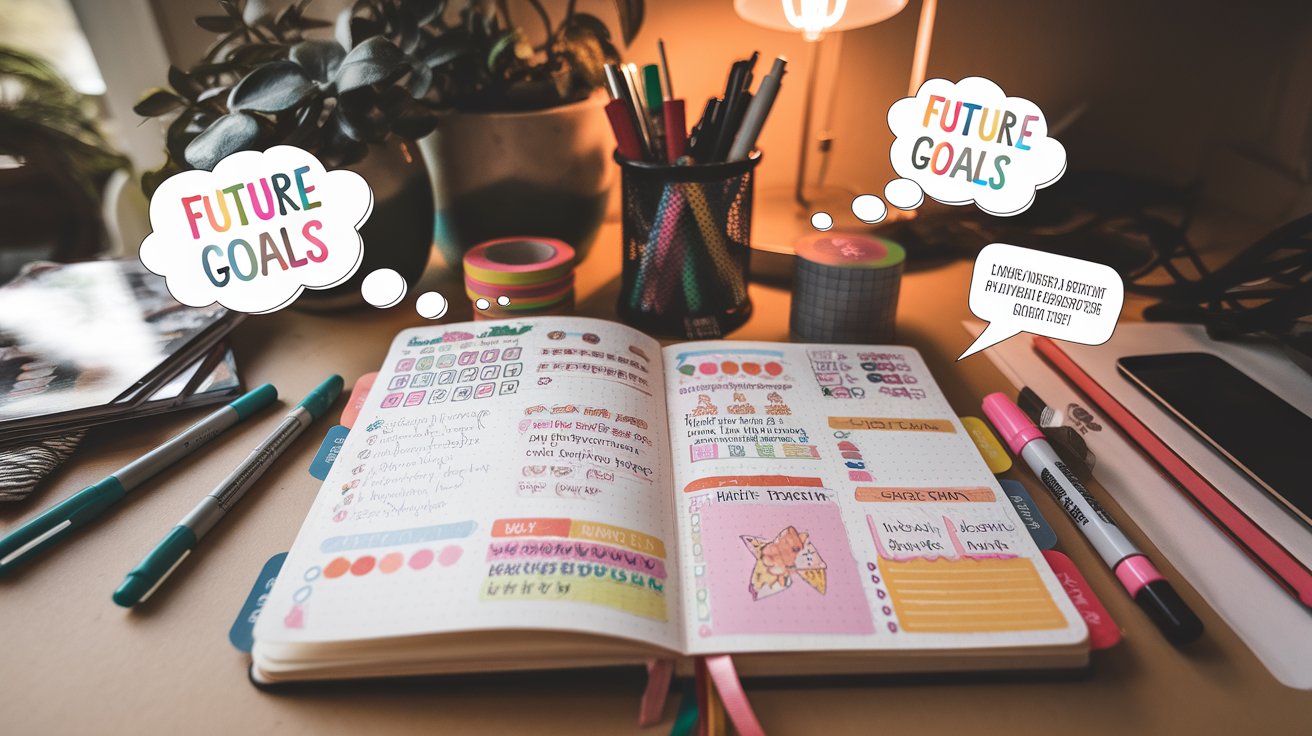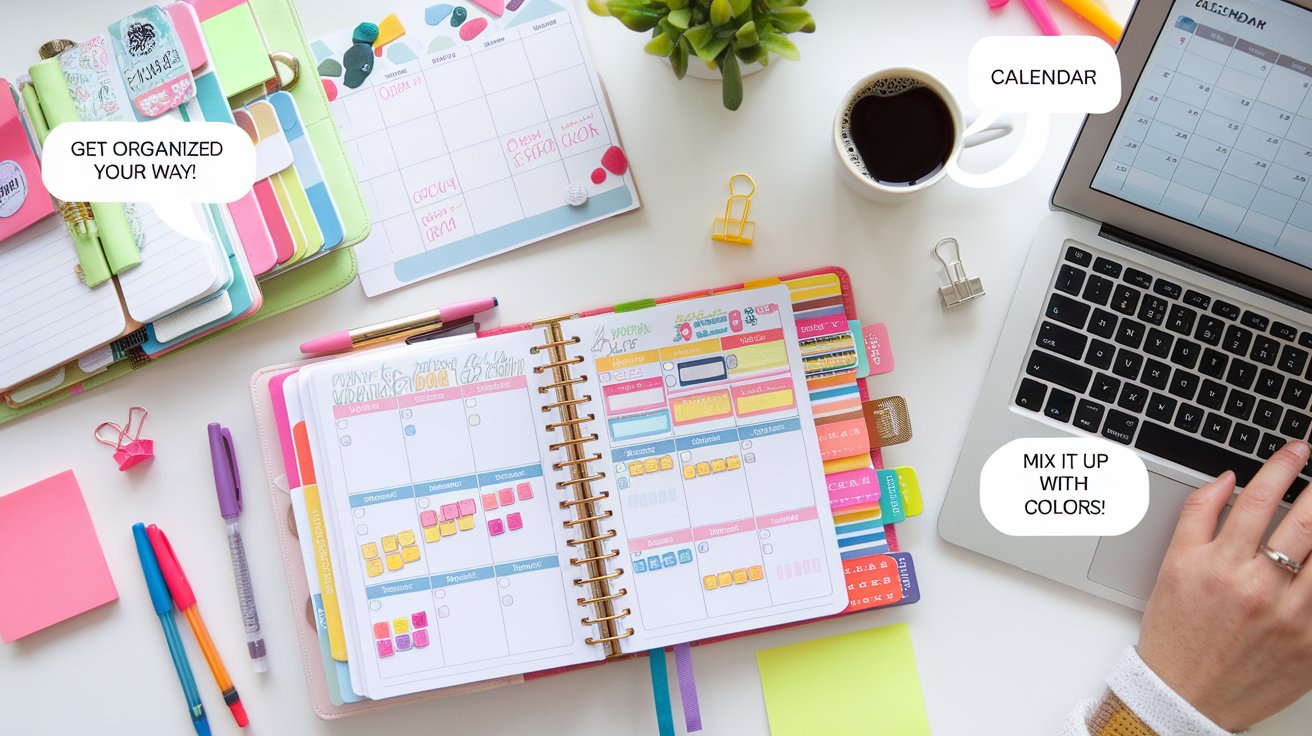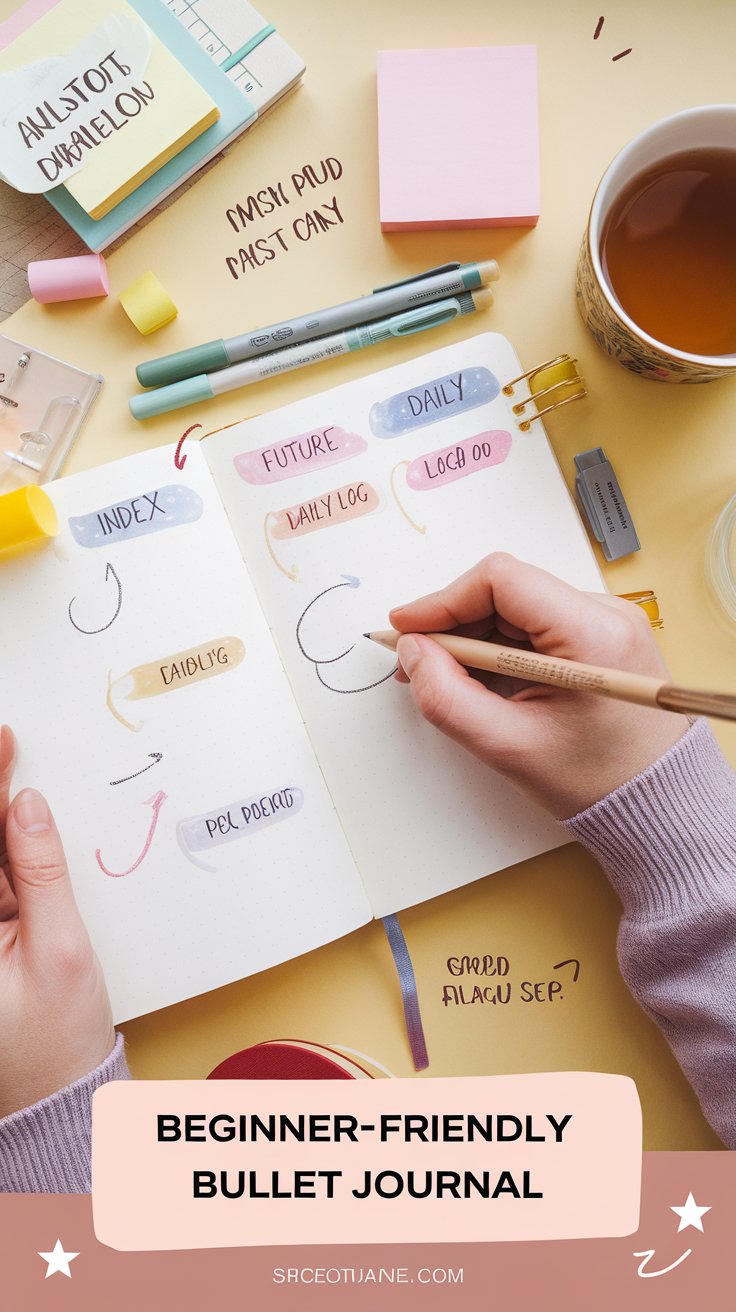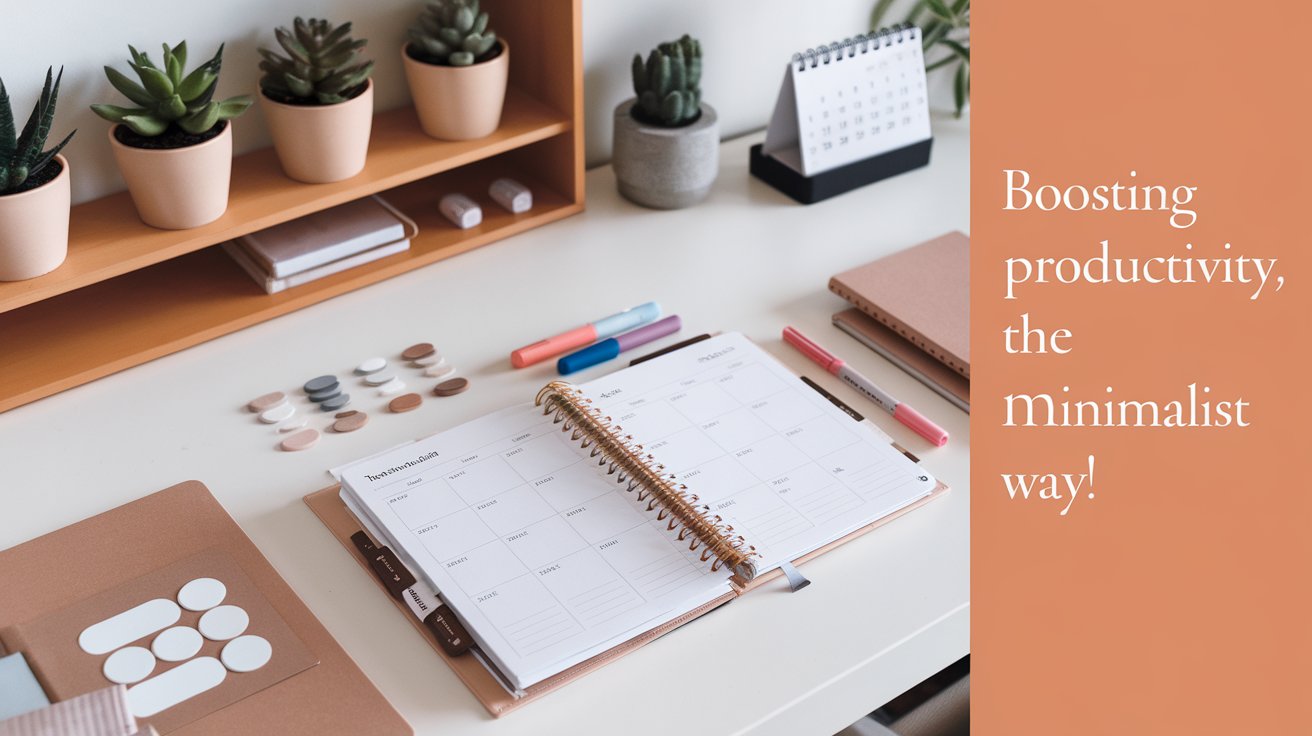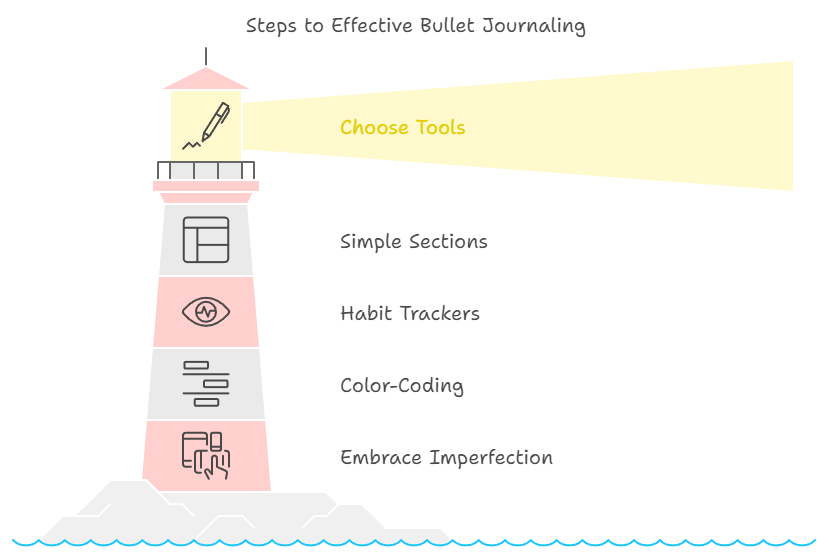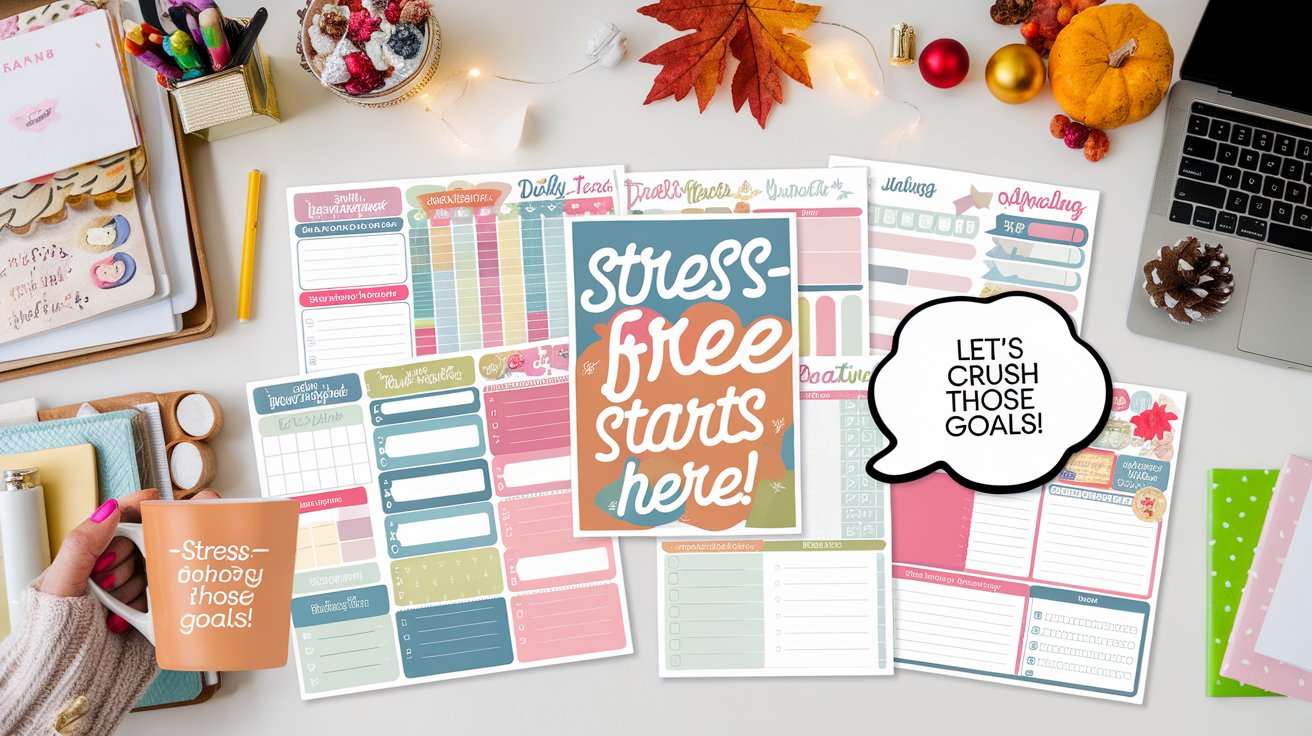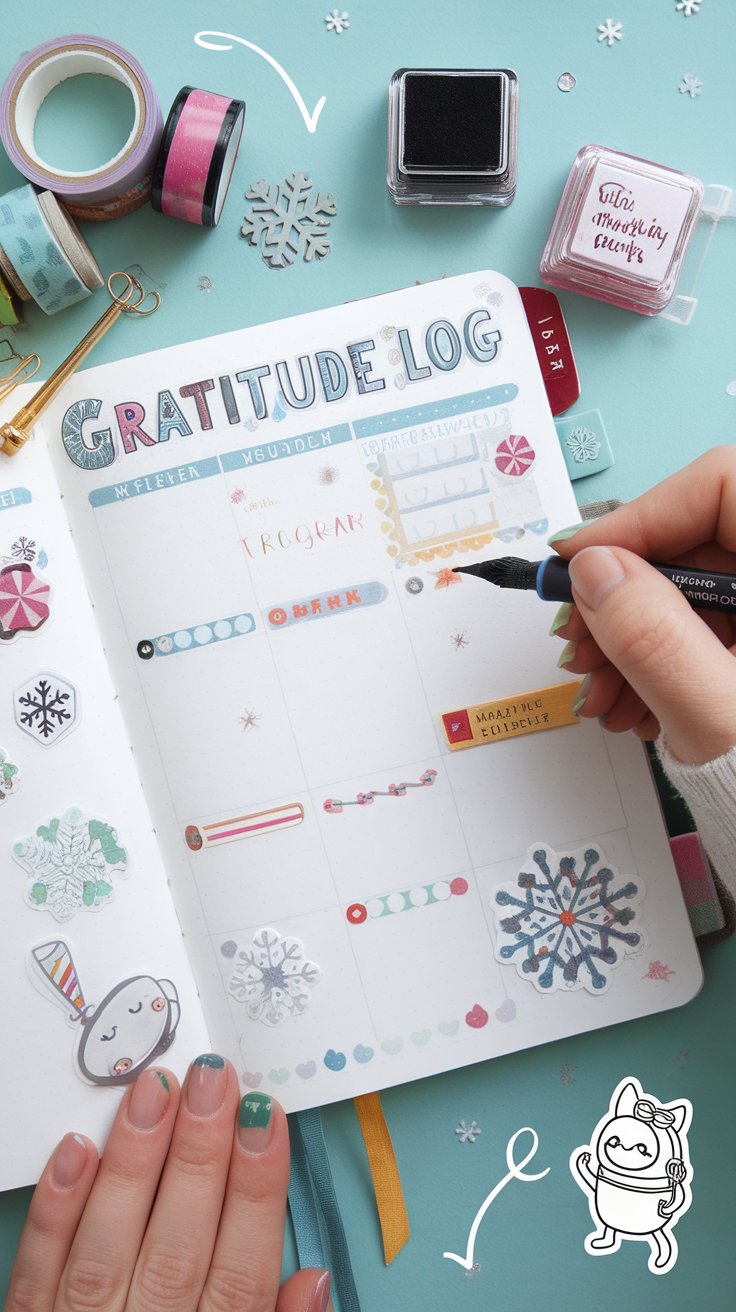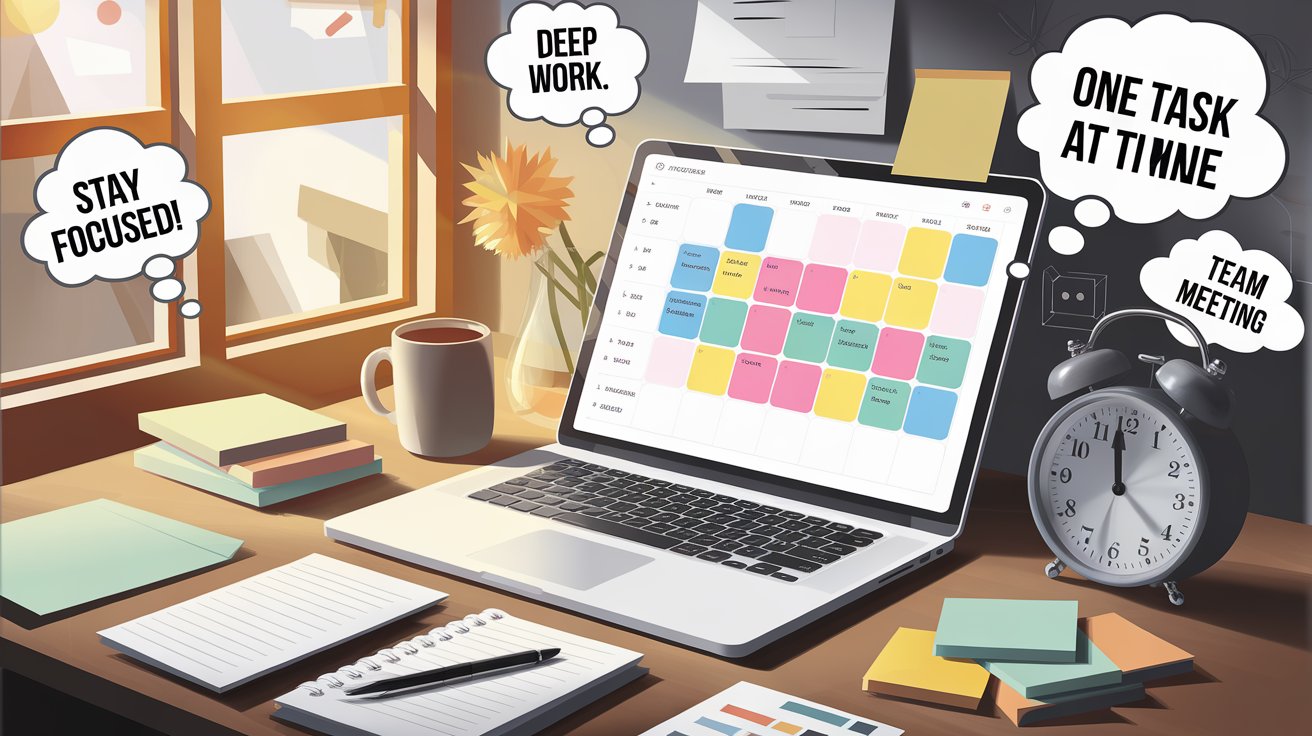Introduction
A bullet journal is more than just a notebook; it’s a versatile tool that can help you organize your life and stay on top of your goals. Whether you’re a beginner or an experienced planner, bullet journaling offers a simple yet effective way to manage tasks, track habits, and foster creativity. With the right approach, setting up a bullet journal can transform your routine and make daily planning an enjoyable experience.
In this guide, we’ll explore everything from the essentials of starting a bullet journal to creative ideas for personalizing your layouts. By the end, you’ll not only know how to set up your journal but also how to make it uniquely yours. Let’s dive in and unlock the full potential of bullet journaling!
Key Takeaways
- A bullet journal is a customizable system that helps you organize tasks, goals, and habits effectively.
- Starting a bullet journal requires only a notebook, a pen, and a simple setup with essential sections like the index, future log, and daily logs.
- Creative supplies like washi tape, markers, and stencils enhance the visual appeal and functionality of your journal.
- Personalization is key—use themes, unique spreads, and layouts that align with your interests and needs.
- Bullet journaling simplifies complex tasks by breaking them into manageable steps and tracking progress over time.
- Consistency and reflection are critical to making bullet journaling a habit that supports long-term productivity and creativity.
How to Start a Bullet Journal for Beginners: A Step-by-Step Guide
Starting a bullet journal can be both exciting and manageable with the right approach. Begin by selecting a notebook and pen that suit your style and needs. Start with an index page and number your pages to keep everything easily trackable. Next, create a future log to jot down upcoming events or goals. Your monthly and daily logs are the heart of this system, helping you plan tasks and reflect on progress. A habit tracker can be invaluable for monitoring personal growth. Remember, bullet journaling is adaptable; there’s no “wrong” way to begin. Whether you use washi tape or stick to a minimalist style, focus on what helps you get organized. This guide will help you navigate your first bullet journal with confidence and clarity.
Essential Sections to Include in Your First Bullet Journal
Starting your first bullet journal can feel overwhelming, but including essential sections makes it manageable. Begin with an index to organize your content. Add a future log for long-term goals or appointments. Next, create a monthly log to break down tasks and events. Finally, include a daily log to manage day-to-day responsibilities. Don’t forget to use a habit tracker for personal growth and progress. These sections will give you a solid foundation and help you stay on track as you explore bullet journaling.
Tips for Staying Consistent with Bullet Journaling
Consistency is the secret to making your bullet journal work. Start small by dedicating just a few minutes each day to updating it. Use reminders to establish a habit and keep your journal visible to encourage regular use. Experiment with layouts that fit your routine and make entries enjoyable by incorporating creative elements like doodles or washi tape. By focusing on achievable goals and celebrating small wins, you’ll find it easier to stay consistent.
Beginner-Friendly Tips for Starting Your First Bullet Journal
1. Choose the Right Notebook and Pen
Selecting a notebook with dotted or grid paper and a smooth-writing pen can simplify your bullet journaling experience. These tools provide structure and ease for your layouts.
2. Start Simple with Essential Sections
Focus on basics like an index, future log, monthly log, and daily log. These sections form the backbone of your journal and are easy to set up.
3. Incorporate Habit Trackers Early On
Habit trackers are simple yet effective for monitoring daily routines like hydration, sleep, or exercise. Start with one or two habits to avoid feeling overwhelmed.
4. Use Color-Coding for Organization
Colors can help differentiate between categories, tasks, and notes. Highlighters or colored pens make your journal visually appealing and more organized.
5. Don’t Overthink Perfection
Your first bullet journal doesn’t need to be flawless. Embrace mistakes and focus on creating a system that works for you.
Bullet Journal Supplies That Enhance Organization and Creativity
Choosing the right supplies can elevate your bullet journaling experience. A good notebook with high-quality, acid-free paper ensures durability and prevents ink bleed. Fine-tipped pens, vibrant markers, and washi tape allow for creative flair while maintaining practicality. Stencils and rulers can help with clean lines and consistent layouts. For those aiming for organization, consider using sticky notes and page tabs to mark important sections. Whether minimalist or artistic, these supplies can bring your bullet journal to life. Additionally, a sturdy journal cover or carrying case protects your work on the go. By investing in thoughtful tools, you’ll find bullet journaling both productive and enjoyable.
Must-Have Supplies for Beginners
For beginners, keeping supplies simple is the best approach. A durable notebook and a smooth-writing pen are your starting points. Highlighters or markers can help emphasize key points, while washi tape adds color and personality. Sticky notes are useful for temporary notes, and a ruler can help create clean lines. These basics are all you need to start bullet journaling without overwhelming yourself.
Advanced Supplies for Experienced Bullet Journalists
For experienced users, investing in advanced supplies can make journaling more exciting. Brush pens and watercolor markers can add artistic flair to your pages. Stencils are perfect for intricate designs, while specialty notebooks with dotted or grid paper allow for precise layouts. Consider using digital tools like a stylus-compatible tablet for a hybrid journaling experience. These supplies can take your bullet journal to the next level.
Case Study: How Bullet Journaling Improved Productivity for a College Student
Emma, a college sophomore juggling a busy schedule, turned to bullet journaling to organize her academic and personal life. She started with a simple notebook and incorporated sections like a semester schedule, weekly planner, and a habit tracker to monitor study hours and self-care routines.
By using her bullet journal daily, Emma noticed a significant improvement in time management. Her weekly spreads allowed her to prioritize tasks, while the habit tracker kept her motivated to maintain healthy habits. She also included a gratitude log, which boosted her morale during stressful times.
Emma’s personalized layouts, such as exam preparation spreads and essay brainstorming pages, helped her stay focused on her goals. Over the semester, her grades improved, and she felt more in control of her schedule, showcasing how a bullet journal can be a game-changer for productivity and balance.
Creative Ideas for Personalizing Your Bullet Journal Layouts
Personalizing your bullet journal transforms it into a reflection of your life and goals. Start with themes that match your mood or seasonal inspirations, such as floral designs in spring or cozy tones in winter. Experiment with unique spreads, like gratitude logs or movie trackers, to make your journal more than just a planner. Incorporating washi tape, stickers, or doodles adds charm and creativity. Custom headers and colorful habit trackers can make daily planning more engaging. Don’t hesitate to adapt your layouts based on feedback from your own experience. Whether you’re a beginner or an experienced bullet journalist, personalization makes every page meaningful.
Themed Layouts to Match Your Personality
Themed layouts bring life to your bullet journal by reflecting your unique style. Use seasonal inspirations like autumn leaves or summer beaches, or align your journal with your hobbies—books, movies, or travel. Combining colors, doodles, and headers enhances the theme. This adds a touch of personality and keeps your journal engaging.
Unique Spreads to Add Value to Your Journal
Beyond the basics, consider unique spreads like gratitude logs, habit trackers, or even meal planning pages. Travel enthusiasts might enjoy packing lists or trip planners, while students could benefit from study schedules. Tailor spreads to your life and interests to make your bullet journal a versatile companion.
“Keeping a journal of your goals and dreams is a way to keep yourself accountable and your mind organized.” – Ryder Carroll, Creator of the Bullet Journal Method
The Ultimate Guide to Organizing Your Life with a Bullet Journal
A bullet journal can revolutionize how you manage tasks, track goals, and balance priorities. This system combines flexibility with structure, allowing you to customize layouts for daily, weekly, and monthly organization. The key lies in defining clear goals and using tools like habit trackers, future logs, and to-do lists. Bullet journaling also helps break down large projects into manageable steps while keeping everything in one place. By reflecting on past entries, you’ll spot patterns and improve productivity. Whether it’s meal planning, work deadlines, or personal hobbies, a bullet journal provides a comprehensive solution for organizing your life effectively.
Using Habit Trackers to Improve Productivity
Habit trackers are powerful tools to boost productivity. Design grids or charts to monitor daily habits like exercise, hydration, or reading. Reviewing your progress over time highlights successes and areas for improvement. Consistent tracking can help you achieve your goals and stay motivated.
Simplifying Complex Tasks with a Bullet Journal
Bullet journals simplify even the most complex tasks by breaking them into smaller steps. Use dedicated sections for brainstorming, task prioritization, and progress tracking. A well-organized journal helps you tackle projects like event planning or professional goals with confidence and clarity.
Conclusion
Bullet journaling is a flexible and creative way to organize your life while keeping track of what truly matters. From starting with a simple index and daily logs to incorporating habit trackers and unique spreads, this method adapts to your needs and goals. With just a notebook and pen, you can create a system that helps you manage tasks, reflect on progress, and enhance productivity.
As you continue your bullet journaling journey, remember that the key is personalization. Whether you prefer minimalist layouts or vibrant themes, your journal should reflect your personality and priorities. By investing time in your setup and making it a habit, you’ll discover how this tool can simplify your life and bring a sense of achievement every day.


